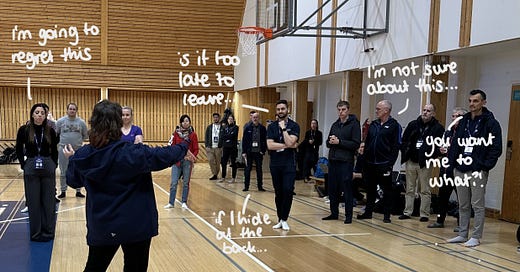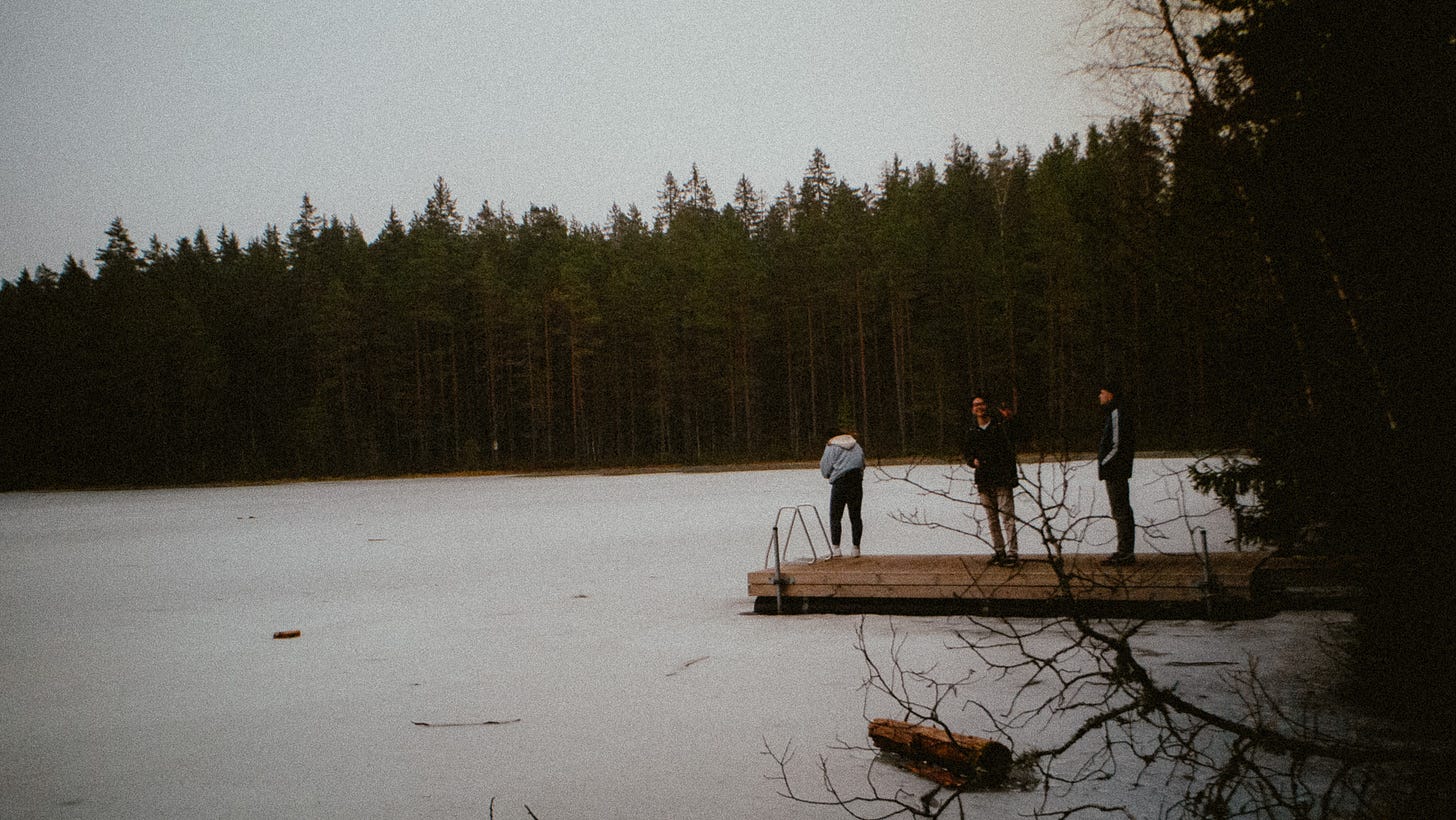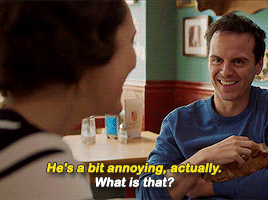(Warning, this is long post. Skip to the end for my key takeaways from the Scientific Conference on Motor Skills Acquisition in Kisakallio, or stay for the chaotic recount of my workshop)
I was walking through a forest with some friends recently, and we came across a “wayfinding” map - you know the ones, with all the trails outlined in pretty colours and a legend to tell you what those colours mean and the direction you should be heading in and some features you might find along the way.
The forest has an abundance of lakes (a severe understatement in a place like Finland, I recently learned). I tried to describe the walk as the one around the lake and then realised there’s at least 4 lakes in the vicinity, two of which we saw on our walk.
Weirdly, there are also regular pontoons that people must use to enter the freezing cold water. So you can imagine our dismay when, as a group of travellers who do not regularly see lakes, we come across an almost identical lake halfway through our walk.. despite just leaving one.
That split second moment of “oh my god are we lost!? How can we be lost, we haven’t left the trail (that often, because of course I ran off to climb stuff)”. We’d checked the ‘wayfinding’ maps whenever they appeared and yet that moment of disorientation was still oh so real.
I was reminded of this quote in Michael Bond’s ‘Wayfinding’:
Some (hikers) make the catastrophic error of thinking that what/where they're looking for isn't there or they've missed it, so they decide its "over there" and change direction - now they're almost immediately lost! (p 178)
I think this goes beyond a trail in the woods out the back of a sports institute that I really didn’t want to leave. It also speaks to presence and expectations, both of which I think thread nicely with the event that will be the star of this show: the Scientific Conference on Motor Skills Acquisition in Kisakallio, Finland.
You said ‘should’
To anyone working in the skill acquisition and motor control space, the Kisakallio conference feels like a rite of passage. I remember hearing about it after everyone got back from the event in both 2019 and 2022 - I was absolutely gutted that I had no idea it was happening until afterwards, every time!!
I find this happens often in the academic space. There is no way of knowing about an event unless you know someone involved in the organisation of it, or are invited in by someone in the field you’re maybe interested in but not directly working in. This makes collaboration across these deeply entangled topics incredibly difficult.
For instance, I would LOVE to attend one of the classical exercise science conferences, but there would be very little of interest to me there despite my unbridled curiosity. I’ve often felt that in the scheme of things, I picked a pseudoscience of a pseudoscience - everyone wants to be // is pretending to be physics, instead of leaning into the different offerings that the world may have for us.
Enter the idea of ‘should’. Alongside ‘expect’, this is a word I’ve left behind because I don’t really think we can be in a position within or beyond science to tell people what they ‘should’ be doing, as if there is an objectively correct path and you are not on it. (it wasn’t said in that manner, just in case you’re reading this). The idea of what we ‘should’ do was kinda what the whole presentation was playing on - is there some common ground beyond that we can use to inform coaching practice?
If we are willing to admit that the practice of coaching has evolved with/out theories to support them - again, not inherently right/wrong - then what makes good practice? what makes poor practice? I was relentlessly recommending this podcast episode by Phil Kearney on the topic of theories in coaching.
I don’t need to rehash those potential answers here, but I’m sure we all have an idea of where we could start to answer those questions. And that’s all it is at most.. a start.
Speaking of starts, I ran a workshop!! Well, two actually. Of course, they unfolded in different ways each time, but I hope the common thread was that they were exactly what we needed in the moment - no more, no less. I felt so bad trying to articulate my half-baked, softly assembled plans to the team helping us setup the space, but I was vehement about being prepared, not planned.
To the point where I had to ask how many people usually take the field for a futsal game… 2 minutes before the workshop started! 😂 this was also the most swearing I had ever received as a result of being a participant in my workshop, because one of the environmental constraints that I didn’t know about until we arrived was that we could not wear our ‘outside shoes’ on the indoor courts, so we had to play barefoot.
This was a lot to ask. I had to plea to a room full of adults to not only play a game for a whole hour, but to take their shoes off too!?! It was about now that I started to worry that maybe this entire workshop would fold and I’d have to completely change the direction of travel… but to their credit, they played. So much so, there were some very sore bodies in the coming days…
Turns out, one hour of non-stop futsal or volleyball is an incredibly taxing activity. My favourite part is that at no point did I say they had to play the entire time. A break could have been taken at any time, but they were huffing and puffing by the time the ‘coaches’ were ready to pitch their idea to the group.
Oh yeah - I should probably tell you what the workshop was about.
(this is a very accurate recreation of the flow of the workshop so you are welcome for the fourth-wall breaking here)
The Workshop
So the program said ‘designing learning environments for different phases of learning’ I think. I dunno, I workshopped the name a few times and I was never quite happy with it, but it turns out you can’t really put ‘we coach different people and we need to cater for their needs so lets find out what we need to attend to so we can respond effectively’ into a conference program.
But that was the intention right, how do we make sure that every version of every person feels supported and appropriately challenged? What do we need to know, and how can we facilitate that effectively? (if we even need to facilitate anything at all 😉)
Ultimately, that last line was kinda the point. When we take the ‘coaches’ out of the equation, what do they really offer? It’s a controversial question to ask, because I think we ‘expect’ the role to be active in the sense that when we are not seen or heard or in the middle of it all, then it may be perceived that we are not ‘coaching’. This. hurts. There is so much activity in ‘not intervening’.
Once the participants had started playing their respective sports (with no instruction or guidance), I intentionally deceived the coaching group by removing them from the hall. As we stood in the hallway, I asked small groups to design a training activity for either the futsal players or volleyball players - without knowing what they can do.
The response was an impressive head tilt.

YES yes I know, being learner-centred by nature means you kinda have to know the learners but I did it on purpose okay! I was amplifying the things we may need to know about the players, the unknowns to our equation while encouraging the coaches to also softly assemble their plans too. I kinda felt like a super-villian (although everyone in the workshop can confirm, i am very non-threatening).
Just for proof, here is an actual photo of me asking politely to enter the conversation… at one point someone asked me if they could do something, like call the players in or run an activity, and I have it on the record that my reply was “go ahead, I’m not running this workshop. I mean, well, I am but like, you know what I mean, you don’t need my permission”. Uh huh, expert presenter material right here.
I swear there is a point here. I did not allow myself to expect that the workshop would go a particular way. I floated around the session and wanted to pay attention to what my learners needed in the moment. That. was. it. And sometimes, it can be that simple.
But the deeper message was that I (hopefully) opened the room with love and held space to create a joyful experience in movement and learning and play. I mean, how can you not be playful when your presenter can’t keep both feet on the ground!?! (Seriously, what am I doing!?)
It’s rare that we have 22 people playing a sport during a workshop about skill acquisition but what better way to feel through the need to cater our activities to different challenge points at different times than to feel yourself being stretched too far and your teammates and coaches immediately redesigning the activity to get it right.
We can use all the pedagogies and training design principles in the world, but if we don’t apply them wholeheartedly and responsively… WHO CARES.
There were so many amazing talks and workshops, and as always, the people were spectacular. Nobody needs the official versions of the keynotes, who are we kidding. Here is my unfiltered commentary about them instead:
In classic Aussie fashion, Damian Farrow opened the conference with a lovely “don’t overthink it”. Be deliberate, absolutely. Know what you need to work with, but don’t get in the way of that flow of information.
The bodies that we are, not the bodies that we have. It was a throwaway line in Duarte Araújo’s talk, but nothing he says is meaningless. We are not brains acting alone… adaptability is the rule, not the exception.
Hone your CRAFT, pay attention for long enough and deep enough to learn when/how to use it. Jia Yi Chow reminded me that it doesn’t have to be all or nothing, just start.
I HATE the design of playgrounds and now every time I see one that doesn’t inspire learning, it makes me MAD. I love that I think of Luca Oppici and Martina Navarro in these moments.
“When the weather was bad, Tanja was good”. Curiosity-led talent development IS POSSIBLE and Tanja Poutiainen-Rinne is living proof - I hope someone describes me like that someday.
Meaningful knowledge emerges from the coach-athlete-environment system. If you are not connected, you’re missing out. Thank you for the reminder Martyn Rothwell.
Every time I think of softly assembled, I will hear it in Tyler Yearby’s voice. The epitome of what this can look like.
Green spaces are the best for learning - get outside. Ingunn, I took this very literally!











Hey Alex,
Chronic experimenter here.
As a primary relief teacher covering a PE class, I’ve had a bit of freedom to do whatever I want—which I try to align with what the children want.
I’ve been experimenting in different ways across all year levels. Most of the focus has been with upper primary, using small-sided invasion games as a base. With junior primary, it was more about using the object (a basketball) as a stimulus and feeling it out from there.
For the upper primary students, I gave them a choice of basketball, netball, multi-goal soccer, and depending on the class, there were dma different number of students in each activity. As a facilitator, I stepped in as an extra player when needed, made rule adjustments, helped balance the teams, or suggested breaks and activity changes when things got too hot or intense.
As with any PE class, some students didn’t want to participate. One group chose the playground; for another group, a few gym mats were enough for the to show and teach me some new moves. For the playground group, I offered physical challenges like longest hangs, timed balance tasks, or climbing the fireman’s pole. We also handed out skipping ropes toward the end for something different.
All of that happened in just 50 minutes.
Trying to embody “prepared but not planned.”
Thanks for always giving me something juicy to read.
Cameron
But why are you all in socks?